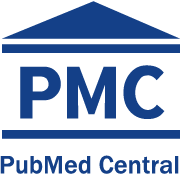Surgical treatment for left-sided heart valve disease in a national reference hospital in Lima, Peru
DOI:
https://doi.org/10.17843/rpmesp.2013.303.276Keywords:
Heart valve diseases, Heart valve prosthesis, Survival, Thromboembolism, AnticoagulantsAbstract
Objectives. To describe the preoperative, intraoperative and postoperative characteristics of patients with left-sided heart valve disease treated in the thoracic and cardiovascular surgery service of a national reference hospital; as well as to describe the occurrence of thromboembolic and bleeding events in these patients. Materials and methods. A retrospective longitudinal study was carried out, which included 185 patients who underwert surgery between 1999 and 2006 at the Hospital Nacional Dos de Mayo (Lima, Peru). The patients were divided into 4 groups: patients with mitral commissurotomy; with aortic valve replacement; with mitral valve replacement and with double valve replacement. T-student test, Chi-square test, analysis of variance and Bonferroni test were used. The survival analysis took into account the severe thromboembolic and bleeding events and a follow-up period of 7 years was set. Results. The average durations of disease was 4.6 years. The most frequent etiology was rheumatic valve disease (74.6%). Hospital mortality was 3.8%, the most frequent cause of death was low cardiac output syndrome associated to multiple organ failure. The incidence of ischemic events (thrombosis or embolization) in patients who had a long-term valve replacement (more than 6 months) was 3.2%, and the incidence of bleeding events was 4.3%. Conclusions. The results of surgical treatment for left-sided heart valve disease in Peru are favorable. The rate of complications and hospital mortality rate, as well as the long-term thromboembolic and bleeding events are comparable to those reported in the world literature.Downloads
Download data is not yet available.
Downloads
Published
2014-03-11
Issue
Section
Research Articles
How to Cite
1.
Vasquez JC, Barrantes CA, Peralta JE, Rojas LE. Surgical treatment for left-sided heart valve disease in a national reference hospital in Lima, Peru. Rev Peru Med Exp Salud Publica [Internet]. 2014 Mar. 11 [cited 2024 Jul. 3];30(3). Available from: https://rpmesp.ins.gob.pe/index.php/rpmesp/article/view/276




























